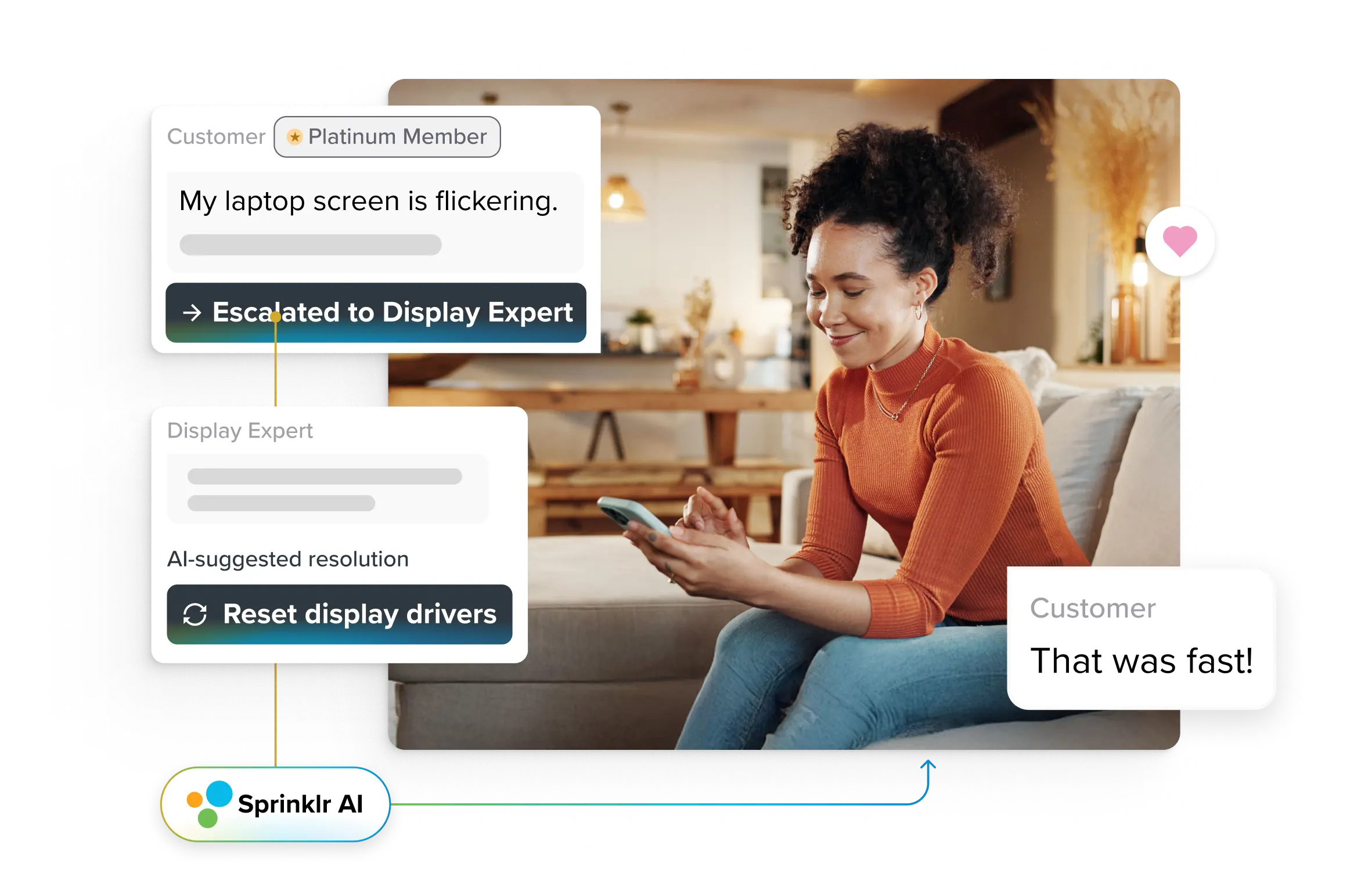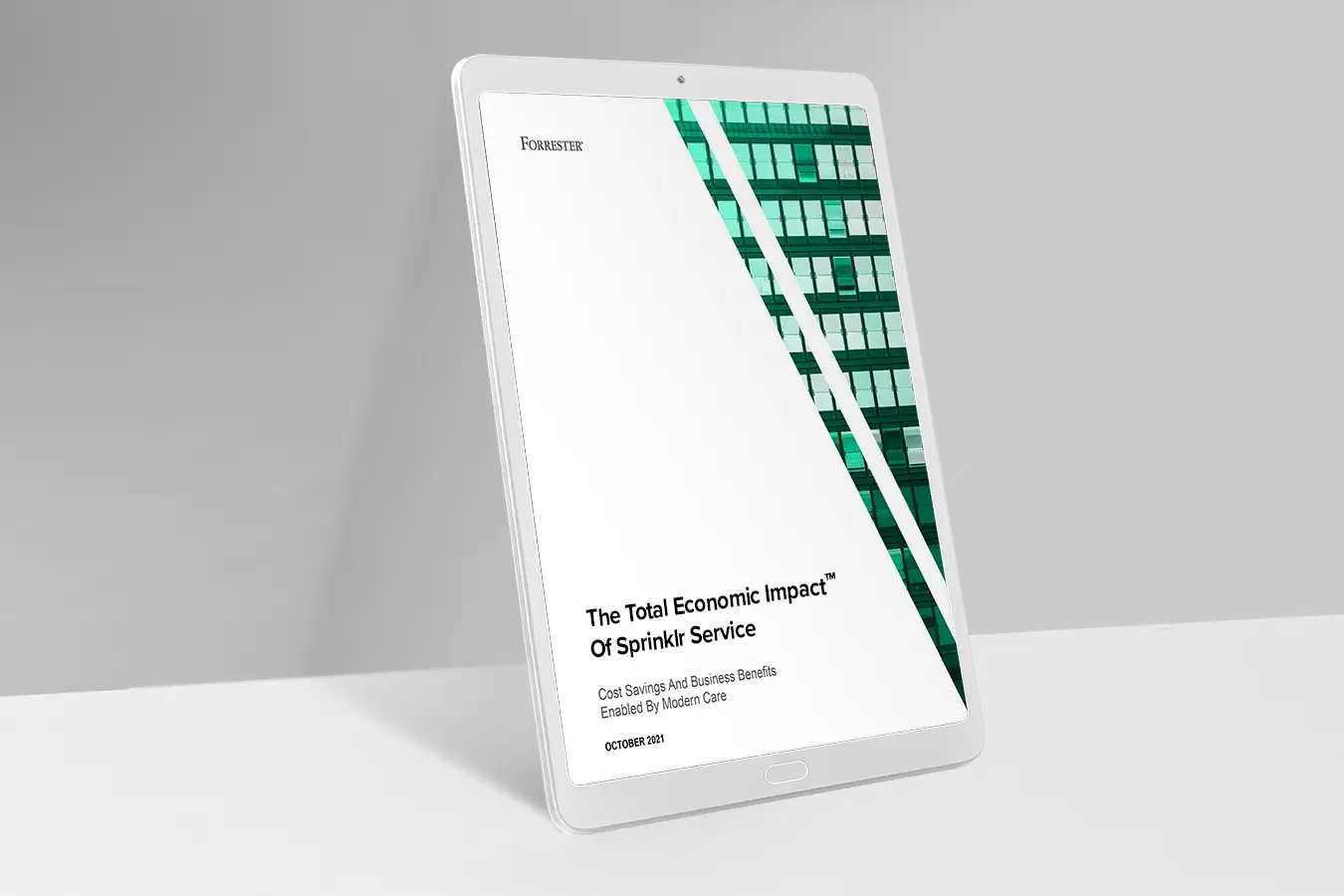Transform CX with AI at the core of every interaction
Unify fragmented interactions across 30+ voice, social and digital channels with an AI-native customer experience platform. Deliver consistent, extraordinary brand experiences at scale.

How Verizon is evolving social care, and what businesses should do to become experience-first across channels
Customer expectations are at an all-time high. Every year, the increasing — and damaging— trend of poor customer experiences unfolding over a public channel causes major issues, not only to those businesses’ relationships with individual customers, but to their relationship with the general public who witness, or hear about, and potentially engage with that negative experience.
At the same time, great customer experiences that occur on public channels can have a tremendous, positive influence on customer perception, sentiment, and shared values with a brand. Many businesses often do not understand, or know how to identify, these missed opportunities. Heading into 2022, progressive, social-forward companies are recognizing that every customer conversation is an opportunity to deepen the connection with that customer — and increase loyalty.
As customer experience becomes a critical area of focus for organizations across industries, the search is on for the next evolution in measuring and understanding customer satisfaction (CSAT). How do you go beyond surveys to get a truer sense of customer sentiment, emotion, satisfaction, and a deeper more immediate understanding of a customer's brand journey? And how do you report on this in a way that’s compelling to executives who are only concerned with the big picture? I spoke to Ken Madrigal, a leader and innovator in Social Customer Experience Strategy at Verizon, to get his take on the biggest trends in social care and a few predictions on where we’re headed.
- The past couple of years have introduced a lot of unpredictability and transformation to social care. What shifts have stood out the most to you?
- What’s the best way for a business that wants to become experience-first to get started?
- Designing an experience that not only lives up to customer expectations, but also surprises them in positive ways, and makes your business stand out as unique in their minds, is an ambitious goal. Can you offer any guidelines for how to achieve this?
- How do you work with both new insights from social care and traditional care metrics?
The past couple of years have introduced a lot of unpredictability and transformation to social care. What shifts have stood out the most to you?
Ken: Social media is a unique channel with its own distinct experience when engaging and servicing customers. Organizations really need to evolve their understanding of how this customer touchpoint fits across not only care, but the overall customer journey — recognizing that it has its own very different insights, value, and storytelling.
Within care, there has been a shift and a balancing act between “being everywhere the customer is” versus simplifying customer choice to reach your brand. This has resulted in companies having to rethink the synergies between traditional care channels, such as voice, and emergent digital and social channels, to really develop an experience-driven connection with customers.
Something else companies need to understand is that, because of its public nature, social care has really become part of the brand and reputation ecosystem. Marketing, PR, and Care teams need to evolve their operating processes so that they are deeply aligned and coordinated. But many businesses continue to create siloed firewalls, instead of figuring out new ways to work together in a more integrated approach with social.
Brands that get these groups to work in unison will connect with customers in a more intimate fashion. Of course, when you work with people on social channels, customer privacy is a key concern, especially with the increased sensitivity around people’s data — and new privacy updates — in the last few months and years. Companies really need to get those comprehensive security basics down as part of the foundation for developing a great customer experience. From there, it opens up the chance to create personal, consistent experiences.
What’s the best way for a business that wants to become experience-first to get started?
Ken: If you want to go experience-first, the first question you have to ask is, do you have the basics right? You have to analyze how fast you are, how secure you are, how well you're routing — and balance all of these. Do you have those basics established? That's the first place that we started: making sure our foundation is solid. For a lot of brands, that is still a work in progress.
We’ve worked hard to get to this level of maturity, when we talk about our foundation. Working with Sprinklr and its Sprinklr Service module, we have been able to gain new insights into how agent responsiveness, interaction delivery, and tone impact the customer experience. And we have been able to analyze that split — between how fast the agent gets a case assigned and then responds, versus how fast does the customer feel it.
There's actually a lot of nuance in just that interchange. When you gain that level of understanding, from both an efficiency standpoint and from a routing standpoint, you are on a good path to solidifying your foundation. Then you can start exploring how you can design a unique, differentiated experience for your customers.
Designing an experience that not only lives up to customer expectations, but also surprises them in positive ways, and makes your business stand out as unique in their minds, is an ambitious goal. Can you offer any guidelines for how to achieve this?
Ken: You want to design something that touches the customer in different ways. There are four key ways you want to prioritize — I always call them the four R's. The first one is that a customer will remember the experience. Next is that they will want to return to it.
You also want your experience to be repeatable, meaning that you can do it over and over again — consistently. It's not like when something goes viral and it’s just lightning in a bottle. Going viral is great and can bring in a lot of value, but it’s sporadic and outside your control. And last, especially for social, is that you create an experience that customers like and remember so much that they want to recommend it — meaning they want to share it, which is social power.
If you can pull off those four, you have your unique, differentiated experience. Then the question becomes, how do you report and measure it? …Maybe that’s the fifth R — reporting!
How do you work with both new insights from social care and traditional care metrics?
Ken: Everyone likes to discuss first touch resolutions, average processing time, average first response time, survey ratings — and again these are all foundational mechanisms of care engagement and care response. We are looking to build on, and go beyond those. Now we want to know more, including how many customers we’ve engaged with, what their frustration level was when they entered into the social experience, and then what their level of contentment was when they left.
We are now looking at the journey of the conversation itself — the narrative of care, especially focused on social channels. Which is a total shift in thinking because now we are not only looking at if we solved the customer’s issues, but we are also looking at how much we’ve improved alleviating that frustration level. We can evaluate if they are leaving with a positive emotional and brand outlook.
We’ll look at an interaction and say, “Okay, we solved their problem, and now that they're leaving in this great state, we can actually track both those successes, as well as how far we moved the customer along a spectrum — from frustration to, hopefully, elation.” It really gives us unique data points on how a customer is really aligned to the care service we provide, and how it connects the customer to the brand.
It also has provided a new way to relay social’s story to executives. Many executives still ask, “How do I know if social is working successfully as a channel?” So if we're able to explain it in this way — where you can actually see data that shows a customer’s perception is moving in a certain direction (and even better if they are using social to amplify it for us) — you can actually see and track numbers that show how social is influencing that lift.
When you're able to grow that, and then tell that story from a value standpoint and demystify it a bit for your executives, that’s the new frontier. That’s what we're working on — to change the narrative of how you find a value story.
--
Verizon’s Ken Madrigal is speaking with us this week at CCW Las Vegas. If you’re planning to attend, be sure to check out his session on how Verizon is using automated CSAT and experience metrics as the foundation for their social customer care operations — turning CX detractors into CX promoters.
Sprinklr Service is a finalist for this year’s CCW Excellence Award for Disruptive Technology of the Year. Learn more about how our unified contact center solution can help you improve your customer care experience.
For Verizon, Ken Madrigal leads the social engagement strategy for both Mobile and Fios lines of business. His responsibilities and charter cover transforming the customer experience in social care, executing social content campaigns, supporting digital communities and operationalizing AI programs. Most recently, Ken has focused on enhancing personalized customer interactions in social; resulting in innovative methods to measure those experiences. This has led to new approaches on how to value social for business and change the way to storytell those impacts to senior leadership.









